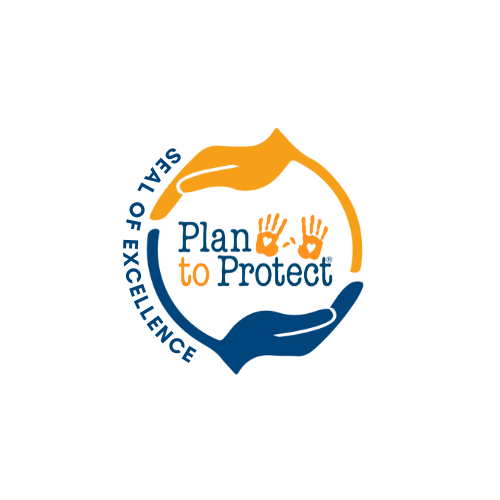
-
We are often asked the question, whose responsibility is it? In our newsletters, we are offering a series on “Whose responsibility, is it?” Last month we focused on the responsibility of the Board, today we focus on Senior Staff Members.
-
The Board should provide effective governance when developing and implementing a plan to protect the vulnerable sector that the organization serves. This includes having clear and compelling documents concerning the structure, operations, and beliefs consistent with safeguarding children, youth, and vulnerable adults.
-
What am I doing to better myself?
I don’t think you can watch a movie like Women Talking , read a book The Six Working Genius , hear these heart-breaking case studies without doing some navel gazing and reflecting on your own leadership style. I deeply desire to be a leader that is healthy and safe, that uses both positional power...
-
Jan23Mon
The Worst Child Safety Habits and How to Replace Them
We are grateful for the work of KidCheck. January 23, 2023A habit is an acquired pattern or routine behavior that when repeated consistently becomes almost involuntary. We are all creatures of habit. Perhaps you’ve never considered that most of what you do in a day consists of habits.
Much like good habits, which keep us focused, productive, and closer to our goals, bad habits can disrupt, waste...
-
Experts constantly tell youth organizations that in order to protect children from sexual abuse, we need to be alert to signs that a sexual predator is grooming them. Yet, at the same time, numerous mental health studies suggest that one of the best ways to help children develop resilience and recover from adverse childhood experiences is for them to have a trusted confidante outside the family. It is a difficult balance. If we don’t guard against grooming, we put children at risk. But if we wrongly label every interaction as potential grooming, then we risk preventing our children from establishing positive and important relationships.
-
Four Worthy Recipients are Awarded the Plan to Protect® Seal of Excellence
Four Worthy Recipients are Awarded the Plan to Protect® Seal of Excellence June 30, 2022TORONTO, JULY 1, 2022, Plan to Protect®, is pleased to announce that four organizations have been recognized for their outstanding achievements in meeting the HIGHEST STANDARD of safeguarding the vulnerable sector as outlined in the Plan to Protect Safeguarding Guide for Children, Youth and Adults. A Peer Review Panel evaluated their submissions demonstrating how they are meeting the high standard of protection that was presented.
The Plan to Protect® Seal of Excellence program recognizes outstanding achievements by churches, charities, not-for-profits and businesses globally. Individuals representing a Peer Review Panel read through each submission in response to the 12 standards, assessing how strongly the organization demonstrated that they are meeting each standard. The 12 categories include Leadership Buy-In, Awareness of Abuse, Policy, Screening, Training, Operational Procedures, Facility, Documentation and Administrative Processes, Reporting, Response, and commitment to protection.
-
I hate writing the words, "another leader has fallen!"
However, once again, we hear of another leader that has committed sexual misconduct and harassment. Another leader has abused his power, influence, authority and control.
Will we ever stop hearing these stories? I wish the answer were yes, but unfortunately, we are an unholy people, and in some way, we all succumb to our cravings and temptations. However, where and when will this stop? When will these abuses end? When will we say enough is enough? When will we learn? When will our sorrow turn into action?
I can remember a time in my life when a wise woman challenged me to count the cost of putting my wants and desires ahead of others.
She shared the image of a beautiful egg that we want to cherish and hold on to and not let others even know about it. However, what we may not know is that within that egg is a deadly snake that will destroy not only the holder but everyone around us.
Once again, we hear of the damage that has been caused by the abuse of power. It is so senseless, so unnecessary, so sad!
-
I believe that most of us have been challenged by the senseless deaths of those that have been victims of hate crimes and discrimination. We have been reminded of the bias’ that so many of us have, whether we know it or not. Most of my friends and family members have on their reading list a book about racial discrimination and inclusion. Is this just a fad or are we making significant changes to our communities to put into practice what we have read?
For some of us we may extend care to the person on the side of the road, but are we able to make sustainable changes within our organization to really welcome the person into our midst that is significantly different than we are?
Are you as challenged as I am when you read the passage in Matthew that speaks to caring for the stranger in our midst? Do you find yourself viewing the homeless person on the street in need of food, clothing, shelter, as the stranger that you passed by and did not welcome?
"For I was hungry, and you gave me no food, I was thirsty, and you gave me no drink, I was a stranger and you did not welcome me, naked and you did not clothe me, sick and in prison and you did not visit me.’ Then they also will answer, saying, ‘Lord, when did we see you hungry or thirsty or a stranger or naked or sick or in prison, and did not minister to you?’ Then he will answer them, saying, ‘Truly, I say to you, as you did not do it to one of the least of these, you did not do it to me.’ " Matthew 25: 42-45
I love the precious image of a young Caucasian toddler jumping up and down when she sees the UPS truck drive up to the house thinking it was her daddy coming home from work. Dejected, she pouts and answers to her mom that it isn’t her daddy, as her daddy is bald, and this UPS driver had a full head of hair. She did not notice the colour of his skin (black), rather, only the amount of hair on his head. If only we could all be so colour-blind!
Similarly, millennials who make up 75% of the workforce want a workplace that demonstrates diversity and inclusion.
However, with most leaders of organizations still being boomers and GenX there is still a significant gap in what we desire to be the norm and reality. Our hope is that these 12 characteristics of an inclusive and discrimination-free community will contribute to the conversation and challenge the reader.
-
When we speak of abuse against adults, the topic is complex. What makes one vulnerable?
According to Brene Brown, “To feel is to be vulnerable, believing that vulnerability is weakness is believing that feeling is weakness. And like it or not, we are emotional beings: What most of us fail to understand, and what took me a decade of research to learn, is that vulnerability is the cradle of the emotions and experiences that we crave. Vulnerability is the birthplace of love, belonging, and joy.”
We are created in God’s image, and He created us to feel deeply, to experience emotions, and to crave loving and nurturing relationships.
Unfortunately, often at the most vulnerable points in our lives, we may be abused and harmed by others. It does not mean we are weak, rather that someone abused their position of power to cause harm. The harm committed by others can injure us physically, emotionally, mentally, and spiritually.
When we began to expand Plan to Protect® to include adults, we initially thought of the vulnerability of the elderly and those with special needs. We then saw the need to protect those who are newcomers to Canada, the influx of refugees to our country. More recently we have heard of the stories of fallen leaders that we once looked up to. Their misconduct was directed primarily to women whom they harmed spiritually, physically and emotionally. Their abuses of power deeply harmed the church. The list of fallen leaders is long and unfortunately, new names are added to the list annually.
How do we combat and respond to abuse against adults?
We begin (as always) by gaining insight and knowledge and awareness of the abuse of power, influence, authority and control. When that power is used to harm an individual and injure another, it is considered abuse.
-
Victims often stay silent about their abuse. They may fear they will not be believed, or fear further abuse from the offender. Too often we hear that the blame for the abuse is placed on the victim rather than the offender.
Statements like these fall under the term victim-blaming:
- “She was flirting with him!”
- “He is known to be a liar.”
- “What was she thinking would happen if she dressed that way?”
- “He has chosen an alternative lifestyle and brought it on himself!”
We want to strongly caution you against approaching any reports or concerns of abuse from that perspective. Instead, we encourage you to appoint an individual to be responsible for receiving reports that will advocate for transparency and truth and also to be an advocate for the victim.








